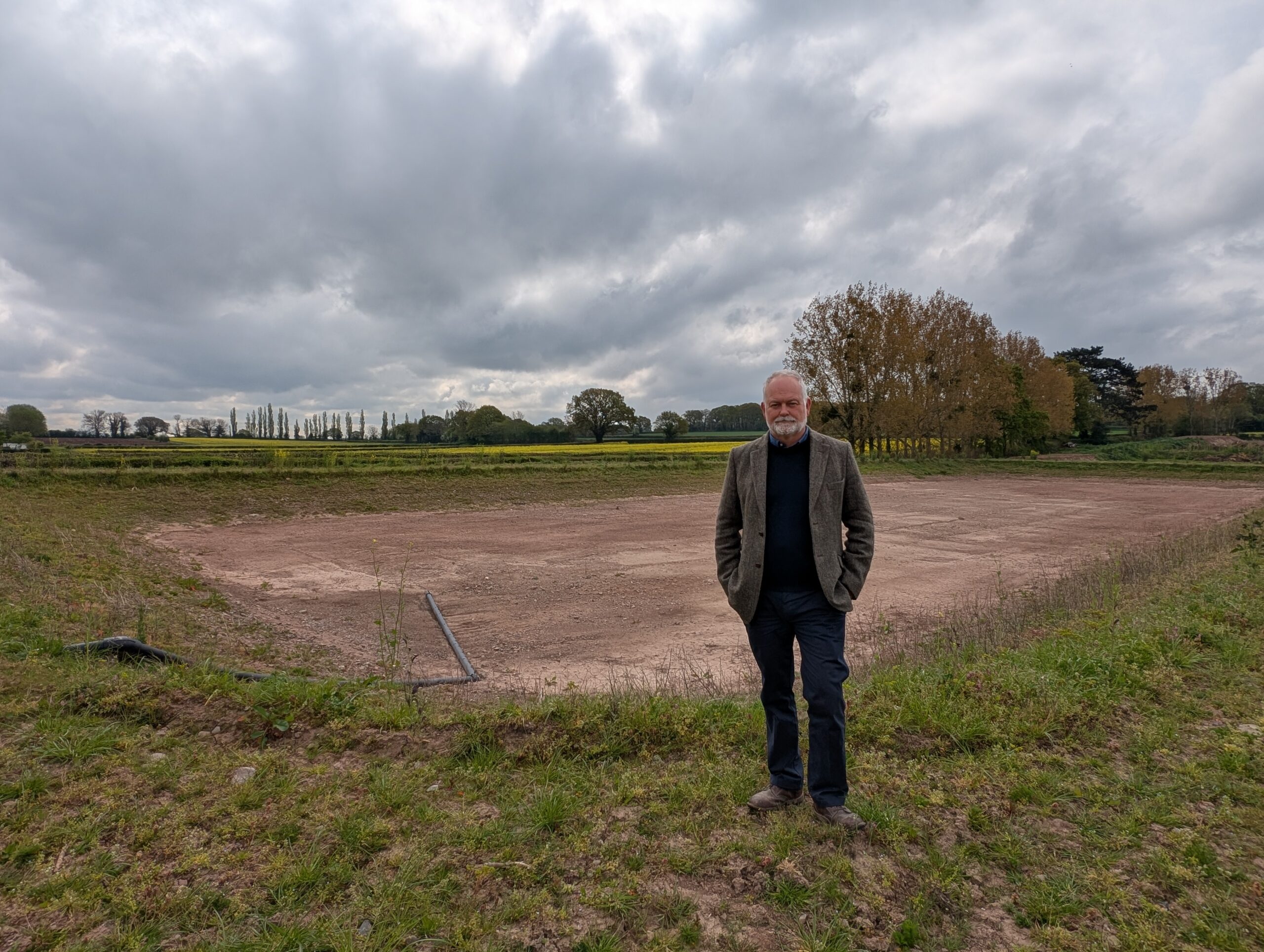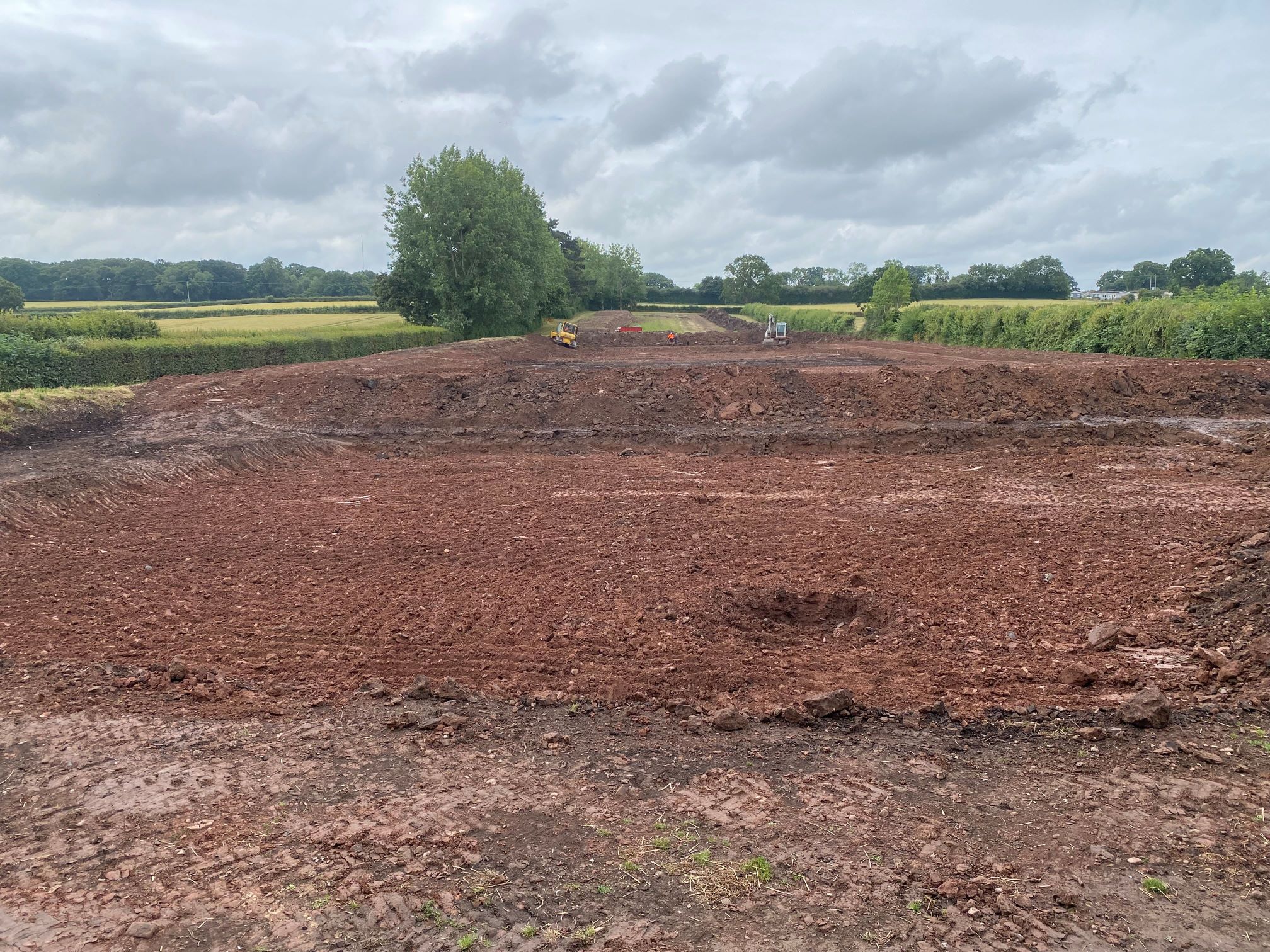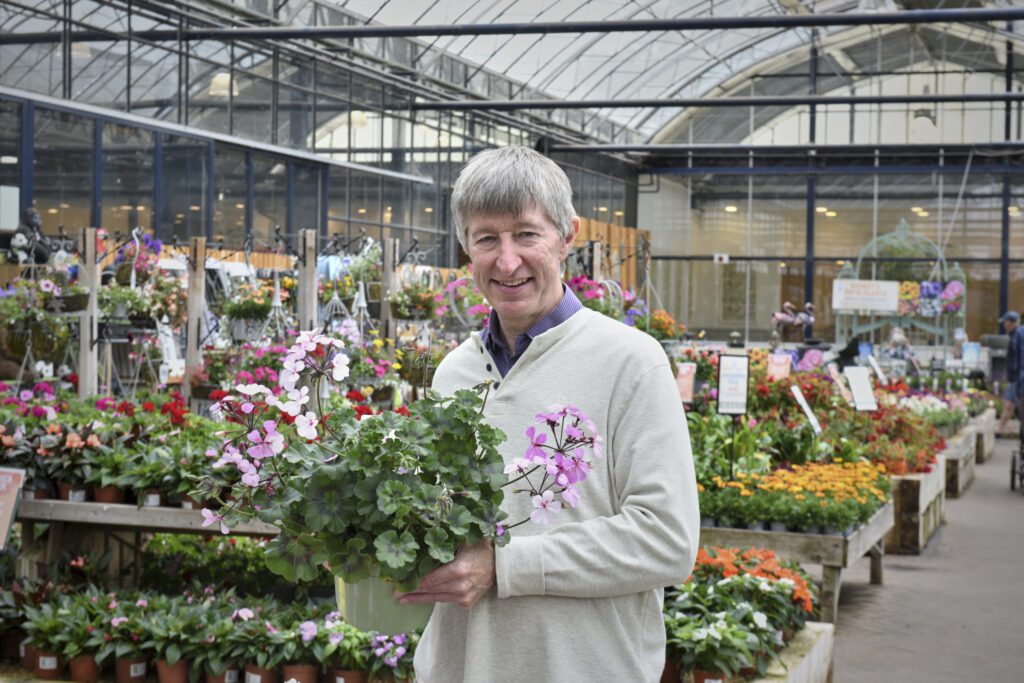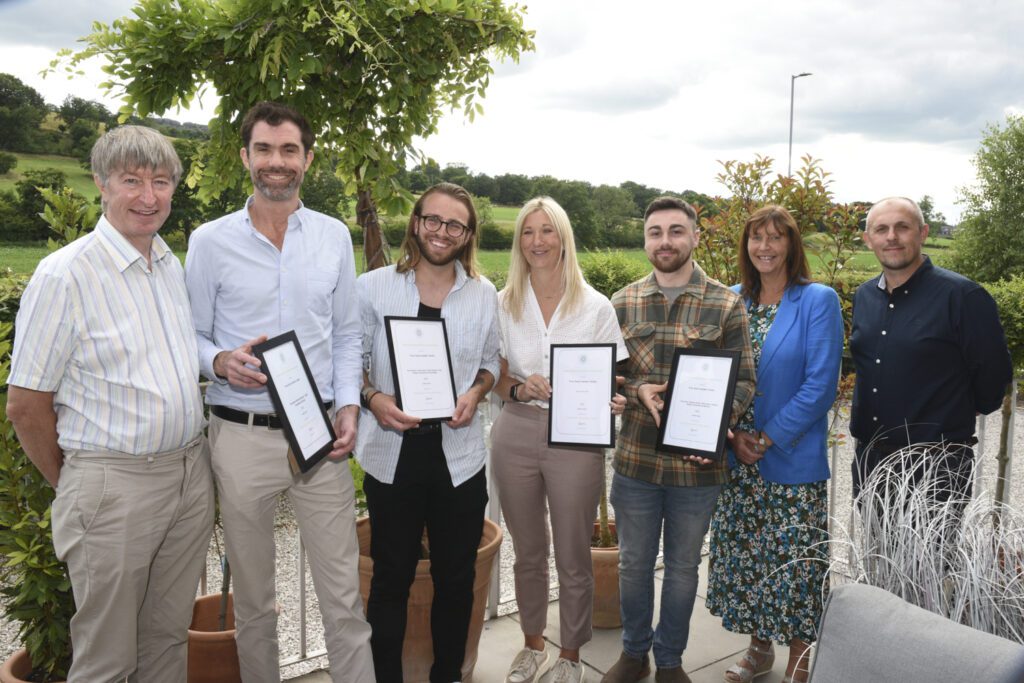Earlier, we reported on Wyevale Nurseries’ plans to create a new reservoir to help capture, store and recycle more water while also protecting the environment and reducing flooding around its Hereford site.
The water conservation system at the container tree production division is designed to boost the commercial nursery’s annual water management targets within its sustainability plans.
Several months into the project, we spoke to managing director Andy Johnson for an update.
Is the project completed? Have the hedgerow and aquatic water plants been embedded?k
The reservoir is fully operational and delivering on its primary purpose: flood alleviation. The existing hedgerow around the perimeter has been retained and is subject to a seasonal management plan in line with best practice for biodiversity—specifically timed outside of bird nesting seasons to avoid disturbance.
The full planting plan has not yet been completed as site earthworks continue. Its function is primarily hydrological rather than ecological, though we’re closely monitoring how nature responds.

What wildlife do you expect to populate the reservoir and its surrounds?
We anticipate increased visibility of native species such as amphibians, insects and birds, particularly those already present in the wider habitat, like wrens, robins, and possibly grass snakes.
However, as the reservoir continues to settle and we complete further development works on site, we expect some of the more sensitive or elusive species to remain at a distance for now. Because the reservoir will be seasonally dry, it’s not intended to host aquatic life year-round, but the wet/dry cycle does still create a microhabitat with potential ecological value.
On a similar attenuation pond on our main site, natural vegetation has developed in response to wet/dry cycles and this is now a nature hotspot with sitings including:
Willow tit – regular
Water rail – regular when water present
Willow warbler
Cettis warbler
Red veined darter – unusual dragonfly predominantly found in Southern England
Black redstart
Blackcap
Treecreeper
Nuthatch
Coal tit
Stock dove
Jay
Sandpiper – very unusual for this environment
Snape have been reported on the site and we expect it to develop along similar lines.
What is this site’s target for recycling water?
While this specific reservoir is not designed for direct irrigation use, we estimate that across both of our sites with reservoir infrastructure, we can reduce reliance on extracted groundwater by up to 35% during peak growing months in favourable years. This contributes directly to our water resilience strategy and supports long-term sustainability planning.
What is the reservoir capacity, and is there a strategy for extended dry periods? Will you return to borehole abstraction?
This reservoir has a capacity of approximately 5,000 m3 and is designed as a flood management and contingency resource . This site blends borehole and 20% mains to hit target water quality for drip irrigation and managed under our existing abstraction licences. The infrastructure allows us to flex between sources, ensuring operational continuity while minimising environmental impact.

Will water drain into the reservoir from surrounding fields and are treatment systems in place to ensure water quality?
Unless specifically called upon for irrigation in the future, this reservoir will maintain a seasonal wetland area benefitting the ecosystem of marginal and flood tolerant species and associated fauna, with some natural and controlled soakaway passing through the strata to groundwater. Irrigation needs could be met from our main site where recycled water is treated for quality.
Are there benefits to your plant and tree stock from using reservoir water instead of mains supply?
On this tree production site, we blend water sources, borehole/mains and recirculation to ensure correct water parameters for drip irrigation of trees grown in peat-free substrates.
What are the financial savings of relying less on mains water?
The broader value of the reservoir is in cost avoidance, particularly around flood mitigation, which protects both operational infrastructure and crops during extreme weather and possibly for our neighbours around us too.
The cash saving is difficult to calculate but factoring in reduced environmental risk, less reliance on paid abstraction and long-term water security, we consider this is an important aspect of our water sustainability strategy.
Are customers and clients becoming more concerned that nurseries become sustainable in terms of water management?
Absolutely. Water use is fast becoming a defining issue in our industry, from large commercial landscapers to local authorities. Clients want assurance that the stock they purchase has been grown responsibly and with future climate resilience in mind. At Wyevale Nurseries, we’re not only investing in water infrastructure but also on other projects on our sites that remain committed to sustainability and we love sharing our learnings with customers. The reservoirs are a clear signal of intent and a practical step toward safeguarding both our business and the wider environment.
Andy, who has a BSC in Horticulture from Reading University, has been at Wyevale Nurseries for more than 30 years. He joined as a management trainee in 1988 and has worked across the business as a manager and director, gaining extensive knowledge and experience, before becoming managing director in 2013.



